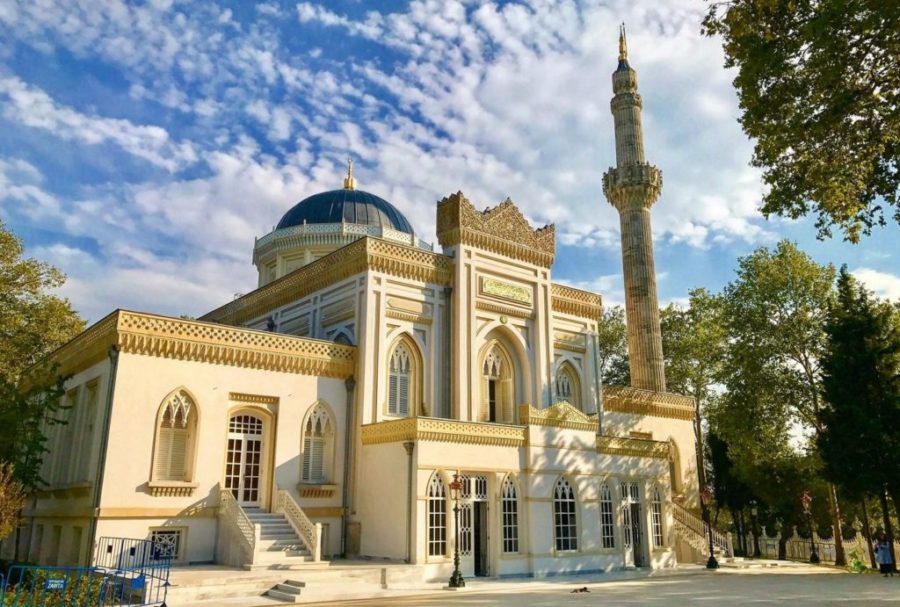
YILDYZ-HAMIDIE – MOSQUE REMINDING A PALACE
This palace-like mosque rises on Yildiz Street in Istanbul’s Besiktas district, writes Merve Nur Türker.
When Sultan Abdul-Hamid II refused to live in the Dolmabahce Palace and chose the Yildiz Palace as his residence, it became necessary to build a mosque in the immediate vicinity of the palace, which was built in 1885-1886. It received a double name – “Hamidie” from the name of the Sultan and “Yildiz” from the name of the palace.
Mosques built by the rulers of the Ottoman Empire are called “sultan” – “salatin jami”. Yildiz-Khamidiye is also notable for being the last “sultan’s mosque”.

Source: Abdullah Freres
Since the temple was intended for the Sultan, this left its mark on its appearance. First of all, this is a luxurious decoration that makes the mosque look like a palace. In addition, pavilions intended only for the Sultan adjoin it on both sides. Here he not only performed worship, but also rested and received visitors.
Since in the 19th century Orientalist and neo-Gothic styles were fashionable, this was reflected in the architecture of the mosque, in particular, in the windows crowned with pointed arches. If usually the dome in mosques is located above the mihrab, then in Yildyz-Khamidiye it is moved closer to the entrance. Also, unlike other “Sultan mosques”, the temple has only one thin minaret with one balcony.

Source: Merve Nur Turker
Since Yildiz-Khamidiye was not only a “sultan”, but also a palace mosque, its interiors are decorated with elegant luxury. Its walls and ceiling are so richly decorated with Arabic calligraphy, floral and geometric motifs that it seems as if there is almost no free space. The golden patterns on the blue dome in the main hall make it look like a starry sky. This analogy is reinforced by the verses in the center of the dome: “I swear by the star when it falls! Your comrade did not get lost [i.e. Prophet Muhammad (peace be upon him)] and did not go astray. He doesn’t speak on a whim. It is only a revelation that is suggested” (Najm, 53/1-4).

Source: Merve Nur Turker
Another noteworthy element of the interior are two bay windows decorated with wooden carvings on the eastern and western walls. They separate the common hall from the pavilions intended only for the Sultan. The ruler could, being behind them, observe what was happening in the hall and perform namaz. It is believed that Abdul-Hamid II, who was fond of carpentry and even had his own workshop in the palace, himself made wooden structures for the mosque.
The presence of two pavilions for the Sultan at once is also quite unusual. It is known that in all other Sultan’s mosques, as a rule, there is only one of them. As expected, this was done so that the conspirators, in the event of an assassination attempt, could not find out in advance exactly where the Sultan would be.

Source: Mustafa Jambaz
Every detail of the Yildiz Hamidiye Mosque impresses with the thoroughness and skill of its execution. Mihrab, minbar and kursi (pulpit from which sermons are read) are made of carved marble with gilding. They are united by a common design, giving the overall design of the mosque a coherent look.
If someday the road takes you to Besiktas, I strongly advise you to visit Yildiz-Khamidiye and admire its magnificent views.

Source: Merve Nur Turker
Islamosphere
SOURCE: https://islamosfera.ru/jyldyz-xamidie-mechet-napominayushhaya-dvorec/

